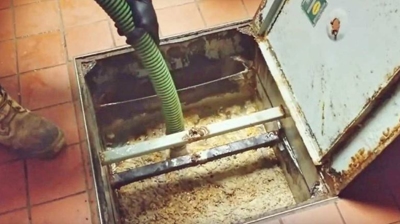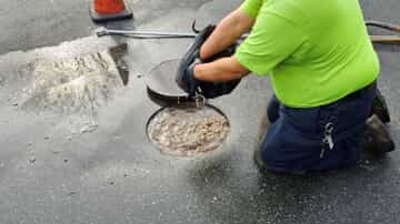As a business owner, ensuring the proper functioning of all equipment and systems is crucial to preventing operational disruption or costly repairs down the line. This includes understanding the significance of grease traps in your establishment. Keep reading to learn more about the basics of grease traps in this post!
What Is a Grease Trap?
A grease trap is a critical plumbing device that every commercial kitchen must have. Its primary purpose is to prevent fats, oils, and grease (FOG) from flowing into the municipality’s sewer system.
Grease traps are used in the following businesses:
- Restaurants
- Cafes
- Hotels
- Schools
- Bakeries
- Hospitals
- Shopping centers with food courts
- And much more
Overall, commercial kitchens can generate large amounts of FOG material, and although kitchen staff attempt to minimize the quantity of FOG that ends up in drains, it is impossible to stop it all from ending up there. As such, grease traps are designed to capture and intercept FOG before it reaches the main sewer, preventing the harmful effects of FOG accumulation in the sanitary sewer system.
Types of Grease Traps
Grease traps are essential components in any commercial kitchen. The best part about grease traps is that they come in different sizes, making it easier to match one to the needs of your facility. Smaller units can connect to individual sinks, while larger ones are perfect for servicing larger facilities.
Additionally, there are three different types of grease traps that you can choose from, each with its own unique functionality and design.
The main types of grease traps include:
- Passive hydromechanical (manual)
- Automatic
- Gravity
By selecting the right size and type of grease trap for your specific needs, you can keep your establishment running smoothly and avoid costly repairs down the line.
How Do Grease Traps Work?
Grease traps work by separating animal fats and vegetable oils from water. This is because grease is less dense than water and won't mix with it. Instead, they float on top of water.
When wastewater enters the trap, it slows down, allowing time for the different layers to separate. The grease accumulates at the top and is trapped by a set of baffles, while solids settle at the bottom. Nest, clear water is able to escape through an outlet baffle. Some traps also have strainers for collecting solid debris, reducing the amount of solids that settle at the bottom.
How Often Should Grease Traps Be Cleaned?
Proper maintenance of grease traps is crucial to the smooth operation of any food service business. Most grease traps should be cleaned out every one to three months, but there's a "1/4th rule" worth paying attention to as well.
This formula suggests that you should clean out the trap when it reaches a quarter of its capacity. Not only does this help prevent foul odors by clearing out the FOG inside the trap, but it also ensures that the trap remains effective in its job, separating FOG from wastewater.
Need Grease Trap Maintenance? Contact Our Team
If you're looking for help with grease traps or have questions about their maintenance, look no further than Wind River Environmental. Our knowledgeable technicians are on hand to answer any questions or concerns you may have.
We can also perform thorough maintenance on your grease trap's internal and external components and recommend a service frequency that's appropriate for its condition. With our expertise and experience, you can rest assured that your grease traps are in good hands.
Get in touch with us today to learn more about how our team can help! Call (877) 560-9007 or send us a message online.





